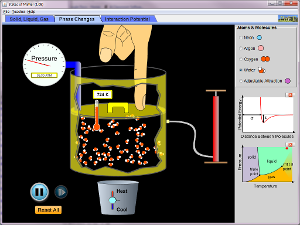Teacher finds new cosmic object
| By Paul Rincon Science reporter, BBC News |
 The object is lit up by a long-dead quasar |
A new class of cosmic object has been found by a Dutch schoolteacher, through a project which allows the public to take part in astronomy research online.
Hanny Van Arkel, 25, came across the strange gaseous blob while using the Galaxy Zoo website to help classify galaxies in telescope images. Astronomers subsequently confirmed that the object was one-of-a-kind.
The work has been submitted to the journal Monthly Notices of the Royal Astronomical Society.
The object quickly became known as "Hanny's Voorwerp" - Voorwerp being the Dutch word for "object".
| Dr Chris Lintott, University of Oxford |
They think the quasar was hosted in a nearby spiral galaxy called IC 2497. It was so bright that, if the quasar was still active, it would be visible from Earth with binoculars.
However, because of the distance between the galaxy and the Voorwerp, light from the quasar would have taken tens of thousands of years to reach the gaseous blob. This is why the Voorwerp is still bright despite the quasar having now shut off. "The quasar itself is no longer visible to us, but its light continues to travel through space and the Voorwerp is a massive 'light echo' produced as the light strikes the gas," Dr Chris Lintott, from Oxford University, explained.
Unique object
Smaller light echos have been noted around exploding stars, or supernovas, but never on this scale. Dr Lintott said the object was the only one of its type known to astronomers, though other Voorwerpen could still be awaiting identification.
He added that the object had been catalogued before, but its significance had only been recognised when it was brought to the attention of Galaxy Zoo team members by Ms Van Arkel.
 Ms Van Arkel was an astronomy novice before taking part in Galaxy Zoo |
She said her interest in music had led her to the book Bang! The Complete History of the Universe, co-written by Queen guitarist Brian May with BBC Sky at Night presenters Chris Lintott and Sir Patrick Moore.
This in turn had encouraged her to get involved in the Galaxy Zoo project, which has just been given three more years of funding.After failing to match the object to any galaxy types described in the Galaxy Zoo classification tutorial, she e-mailed the site's webmaster. This alerted team members who subsequently examined the images themselves.
Death of a quasar
This prompted observations of the Voorwerp by scientists using the Isaac Newton Group of telescopes in La Palma, Spain, and the Swift space telescope. Dr Lintott said team members had booked follow-up observations of the Voorwerp with the Hubble Space Telescope.
But they will have to wait for the orbiting observatory to be upgraded during a space shuttle servicing mission currently scheduled for October.
High-resolution imaging of the object could reveal whether the quasar darkened quickly or over a longer period of time. Team members would also like to look at the object at infrared wavelengths.
It is unclear why black holes turn off, but the phenomenon was previously known from studying populations of active galaxies.
However, Dr Lintott said this could be the first time astronomers have been able to pinpoint one that was once active and has since shut down, using the light echo from a long-dead quasar.
As for what the Voorwerp itself is, the possibilities include a galaxy that has not produced any stars bright enough to be viewed from Earth. But astronomers are stumped about the hole in its middle.
It could have been made when a jet of particles, travelling at near light-speed from the nucleus of IC 2497, punched through the gaseous blob. But this remains highly speculative. The green colour of the Voorwerp is caused by ionised oxygen. During the last year, 50 million classifications of galaxies have been submitted on one million objects at galaxyzoo.org by more than 150,000 amateur astronomers from all over the world.
The next stage of the project will ask volunteers for more detailed classifications, making it easier to identify more unusual objects such as Hanny's Voorwerp.Paul.Rincon-INTERNET@bbc.co.uk






























































No hay comentarios:
Publicar un comentario